Day 44: Shanshan -> Turpan (吐鲁番)
Today I get to enjoy the fruits of yesterdays labour; a leisurely morning and a short ride to Turpan. There are many scenic spots in Turpan, so the tour guide’s plan front loaded the distance yesterday, for a more relaxed and full day today.
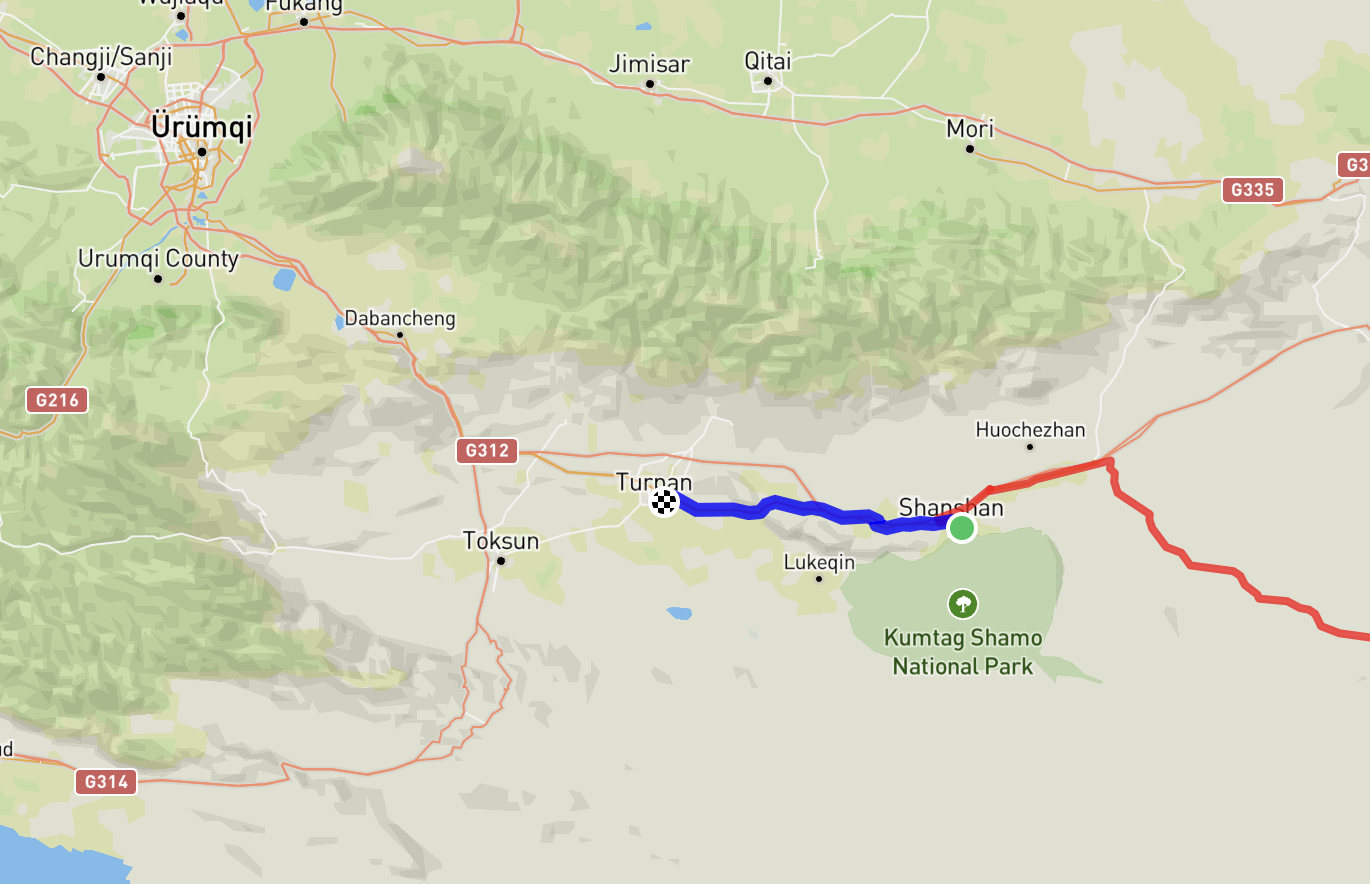 Today’s route in blue
Today’s route in blue
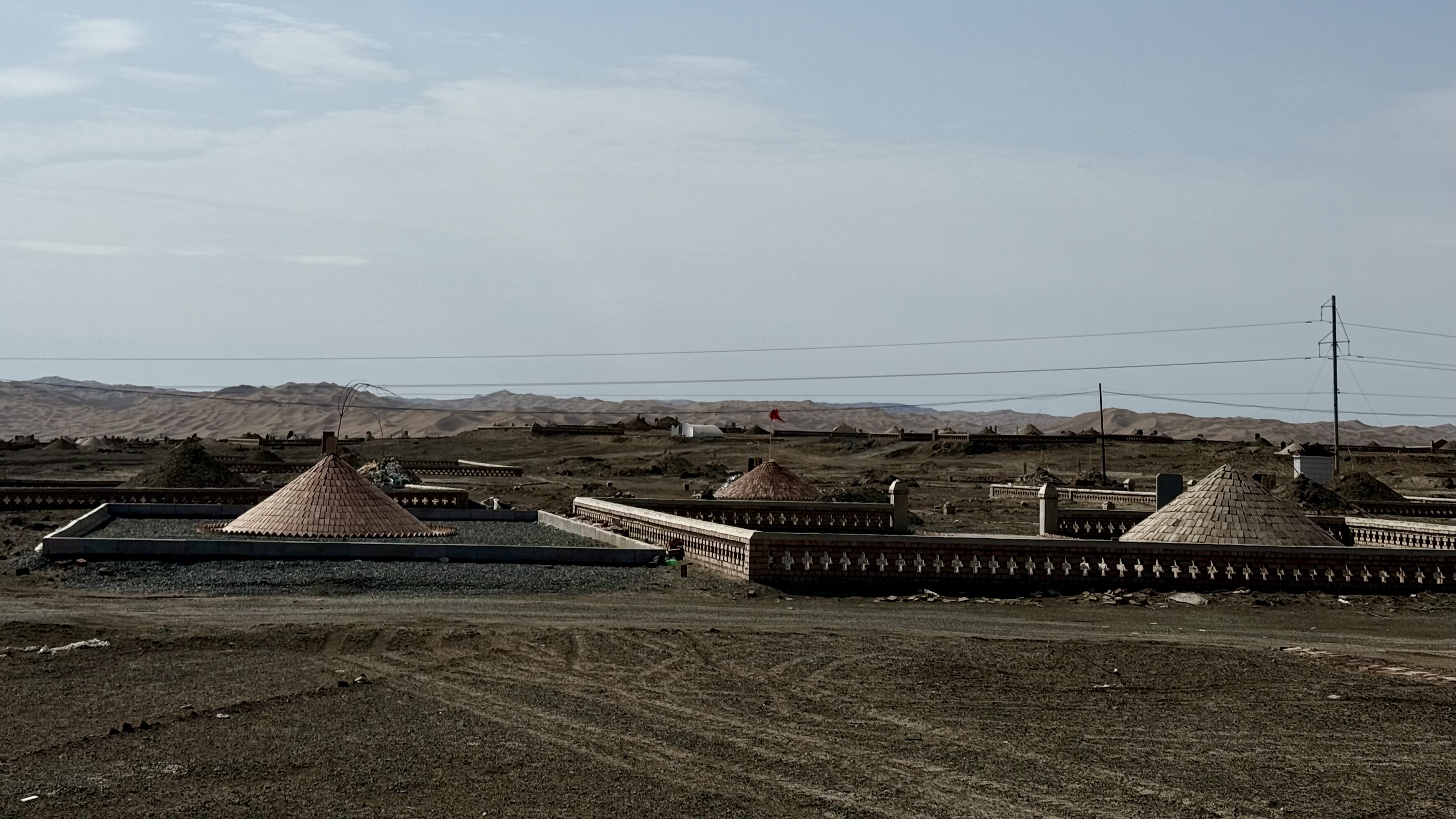 Gravestones along the road. The better ones were made of brick, and the poorer ones were made of dirt.
Gravestones along the road. The better ones were made of brick, and the poorer ones were made of dirt.
Setting off at 10:30AM, I rode at a leisurely pace along the smaller highway to enjoy the scenery. Next to the highway were patches of dirt and rock, adjacent to the mountains, and it was easily accessible from the road, so I took my bike off to explore several times.
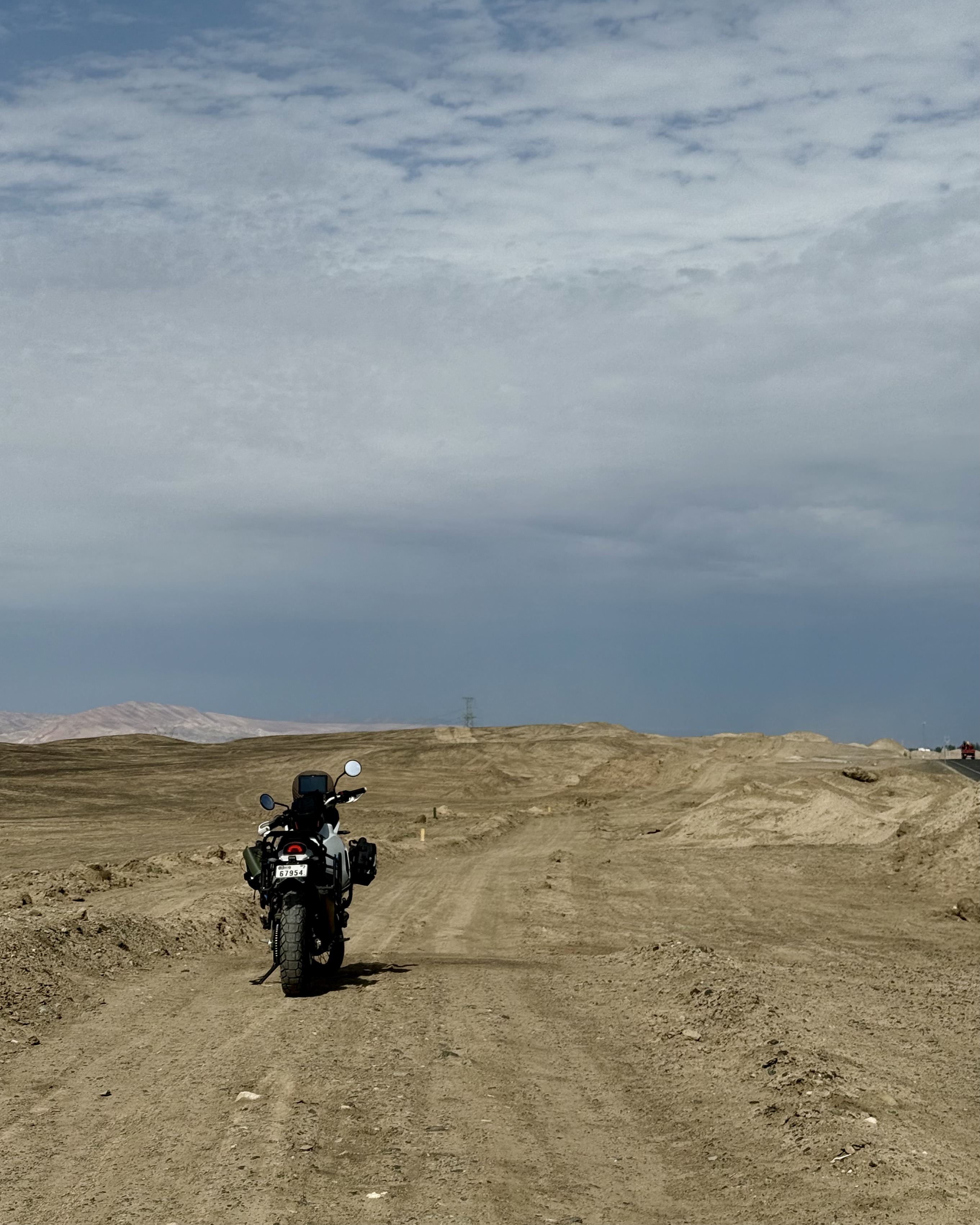 Dirt road (directly adjacent to the highway)
Dirt road (directly adjacent to the highway)
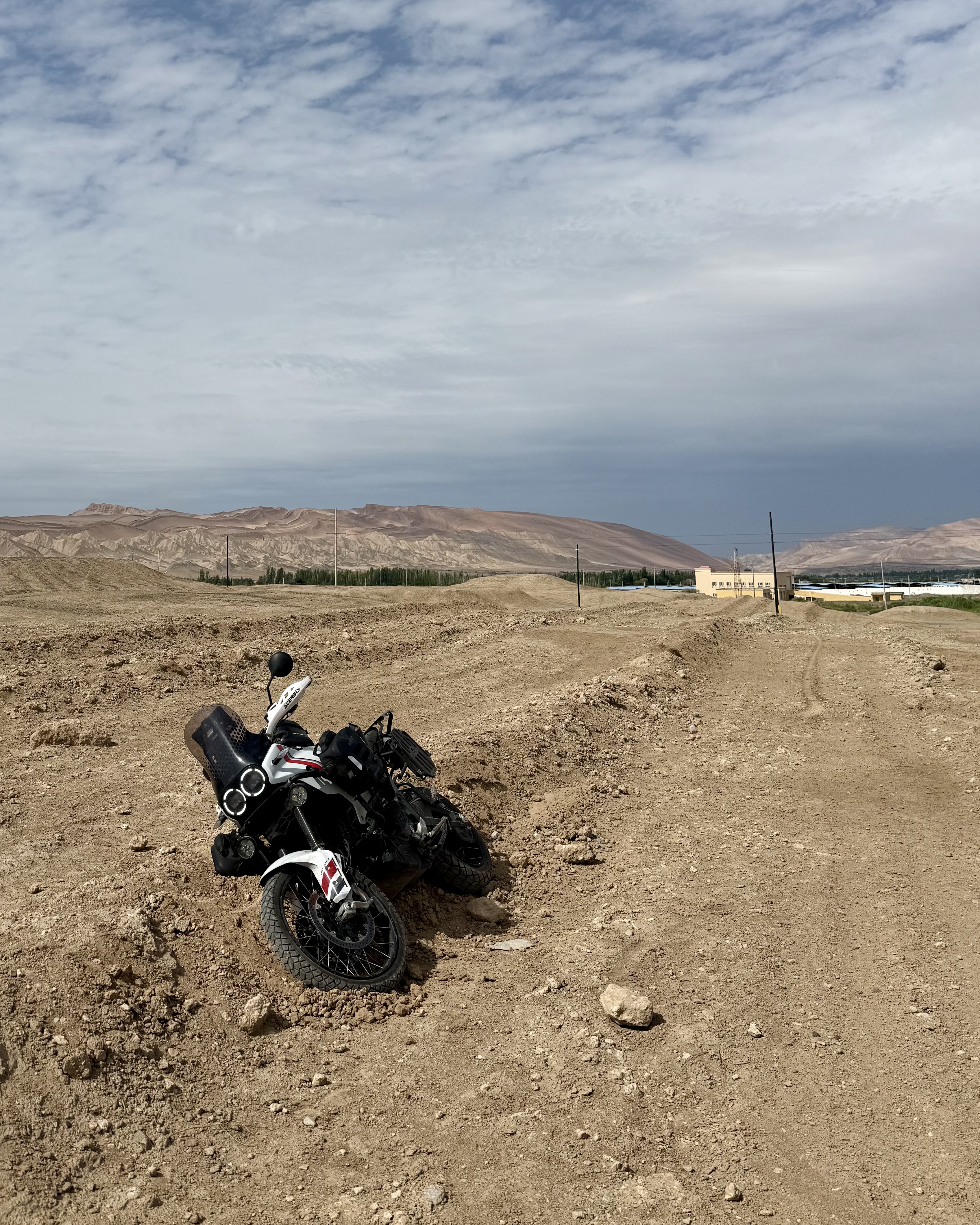 Sandeep was tired and took a nap at a construction site…
Sandeep was tired and took a nap at a construction site…
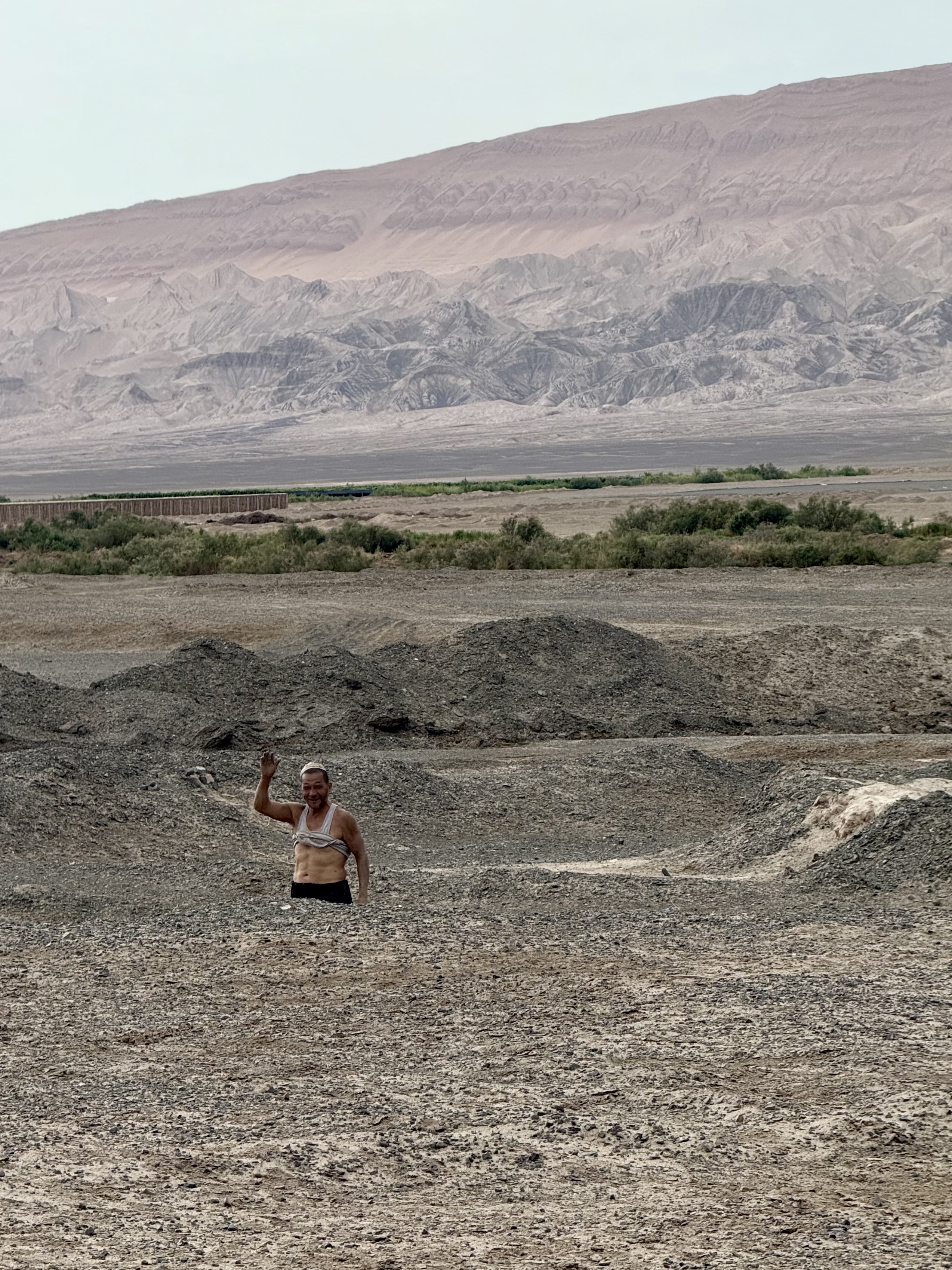 This guy looked at me exploring the patch next to the highway and invited me over for a drink…but I had to decline as I needed to get to Turpan!
This guy looked at me exploring the patch next to the highway and invited me over for a drink…but I had to decline as I needed to get to Turpan!
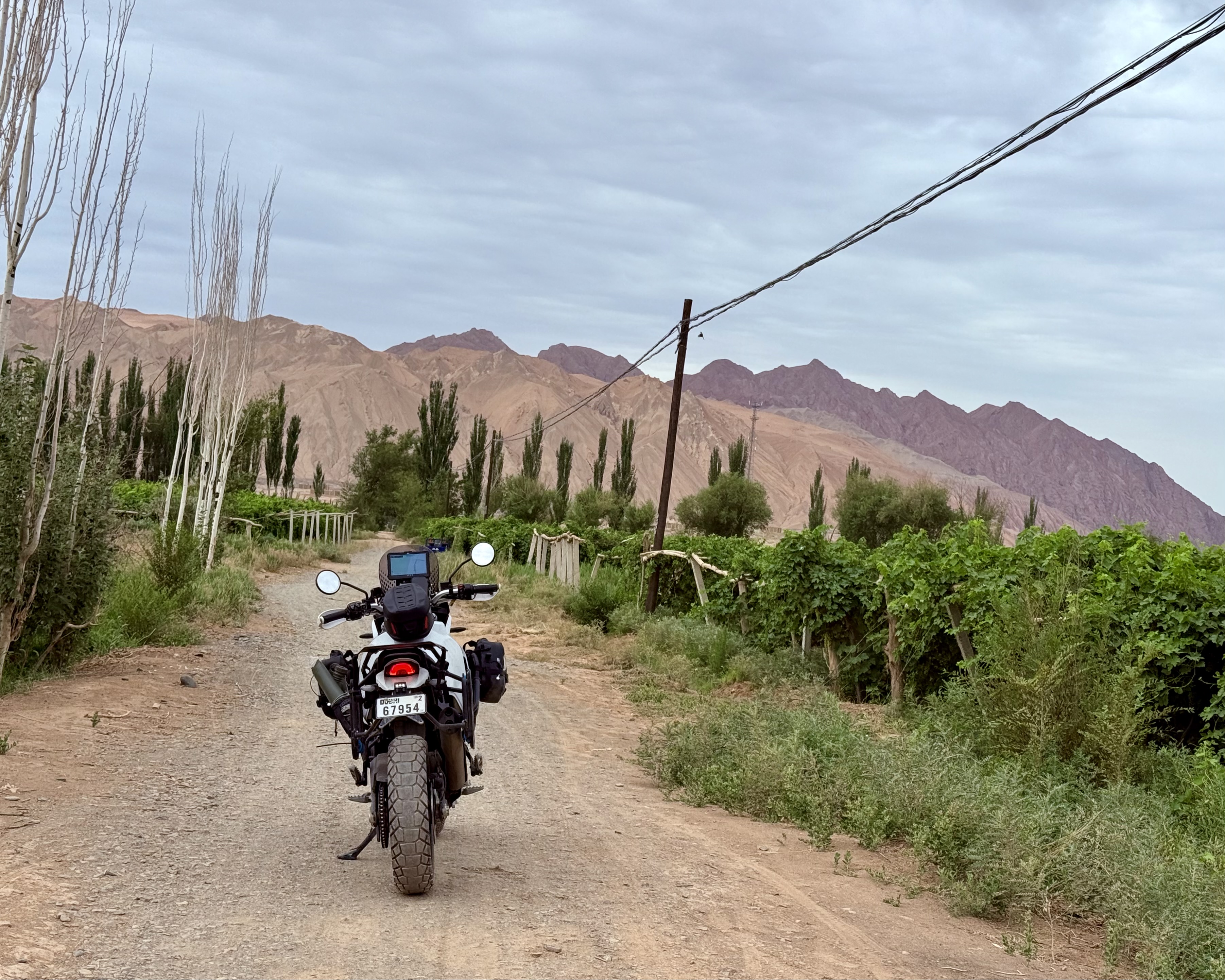 Quick detour to explore some of the vineyards of the area nearby Turpan
Quick detour to explore some of the vineyards of the area nearby Turpan
By lunchtime I’d arrived at the hotel, and after a bite, headed off to see some of the attractions. I left the bike at the hotel and opted to ride with the driver - it is really hot here, with temperatures of ~36 degrees during the day.
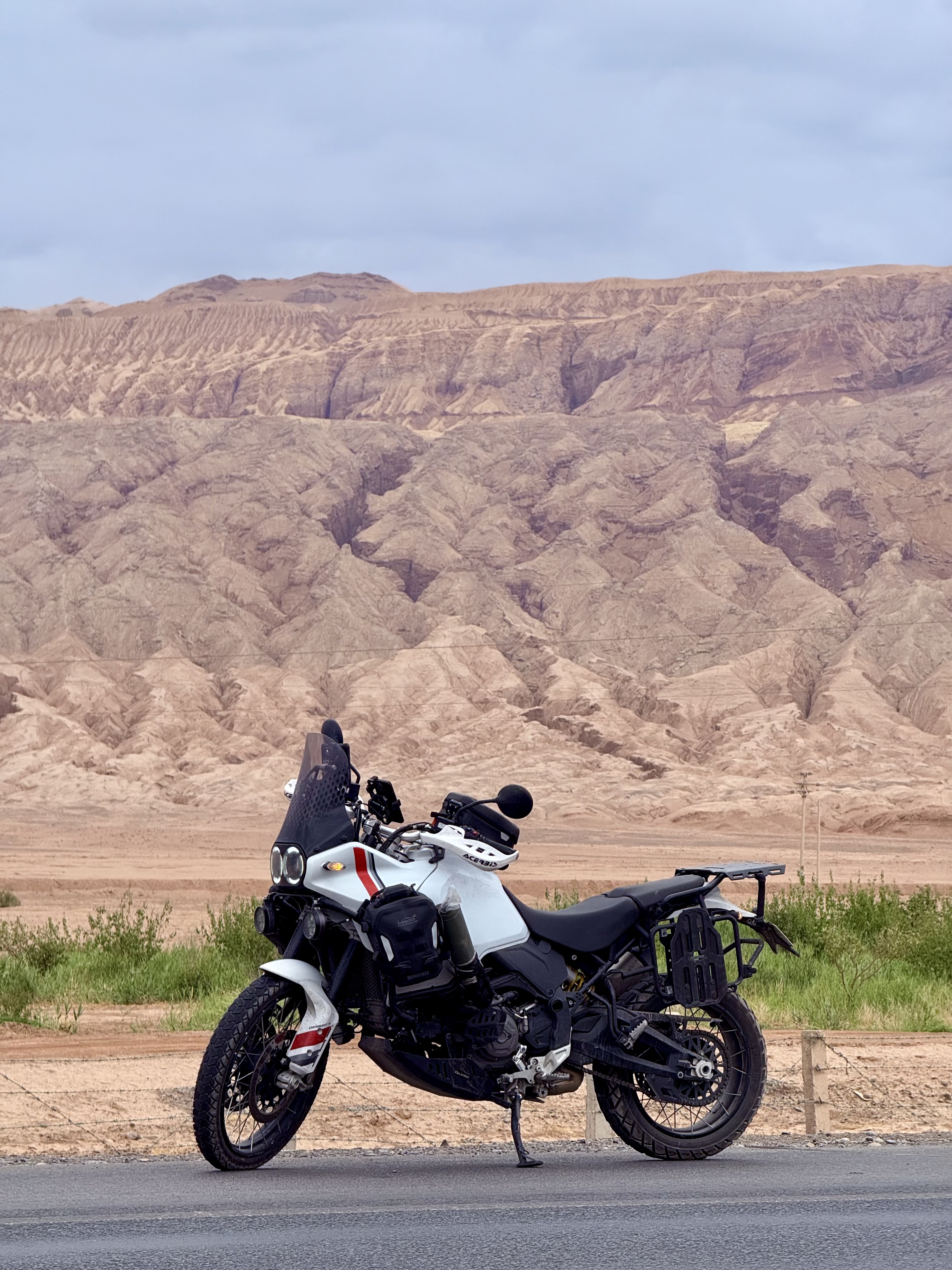 The famous “flaming mountains” (as featured in Journey to the West) between Turpan and the Tianshan mountains
The famous “flaming mountains” (as featured in Journey to the West) between Turpan and the Tianshan mountains
First stop - Ayding Lake, the lowest point in China and the second lowest body of water in the world (first is the Dead Sea).
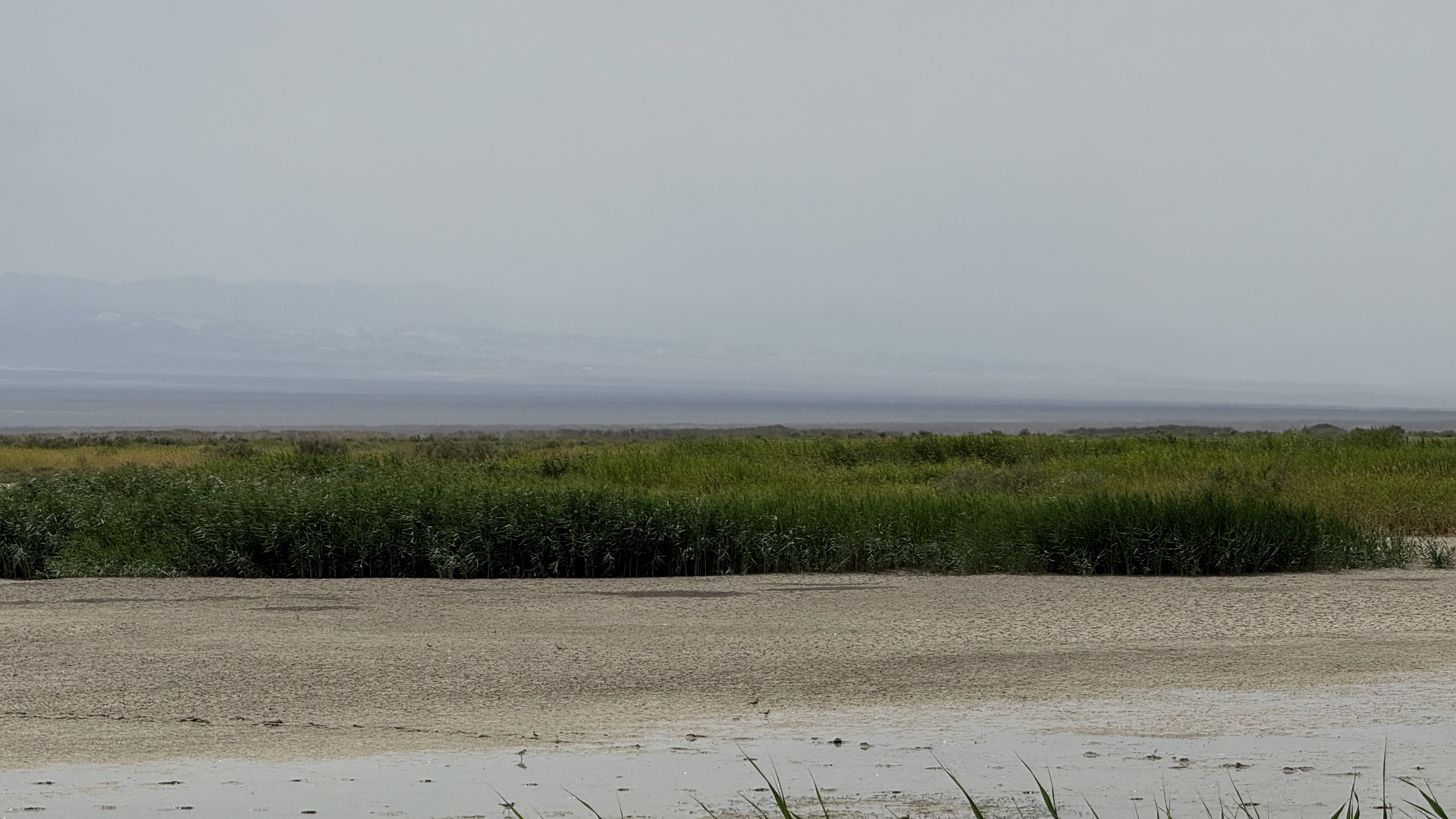 Ayding Lake and the foggy Turpan depression.
Ayding Lake and the foggy Turpan depression.
This body of water has been evaporating for a while, so these days (in mid summer), it is more like a pond. The situation seems particularly dire; large numbers of fish can be seen suffocated on the dried earth.
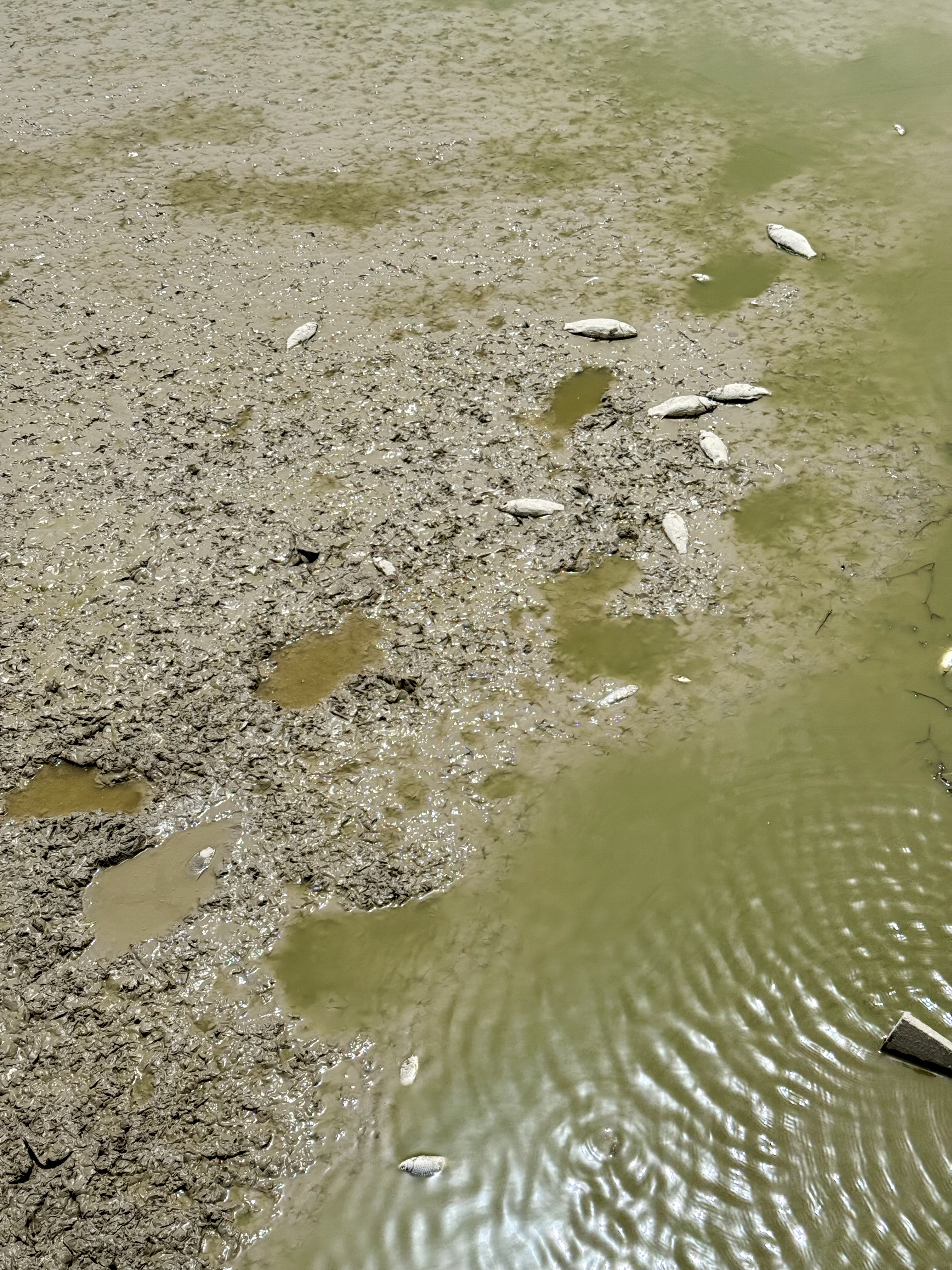 Recently (and not so recently) suffocated fish in the dried lake
Recently (and not so recently) suffocated fish in the dried lake
Next stop was a museum showcasing the underground Karez irrigation system that helps channel snow melt from Tian Shan Mountains into Turpan without the water evaporating in the hot valley below.
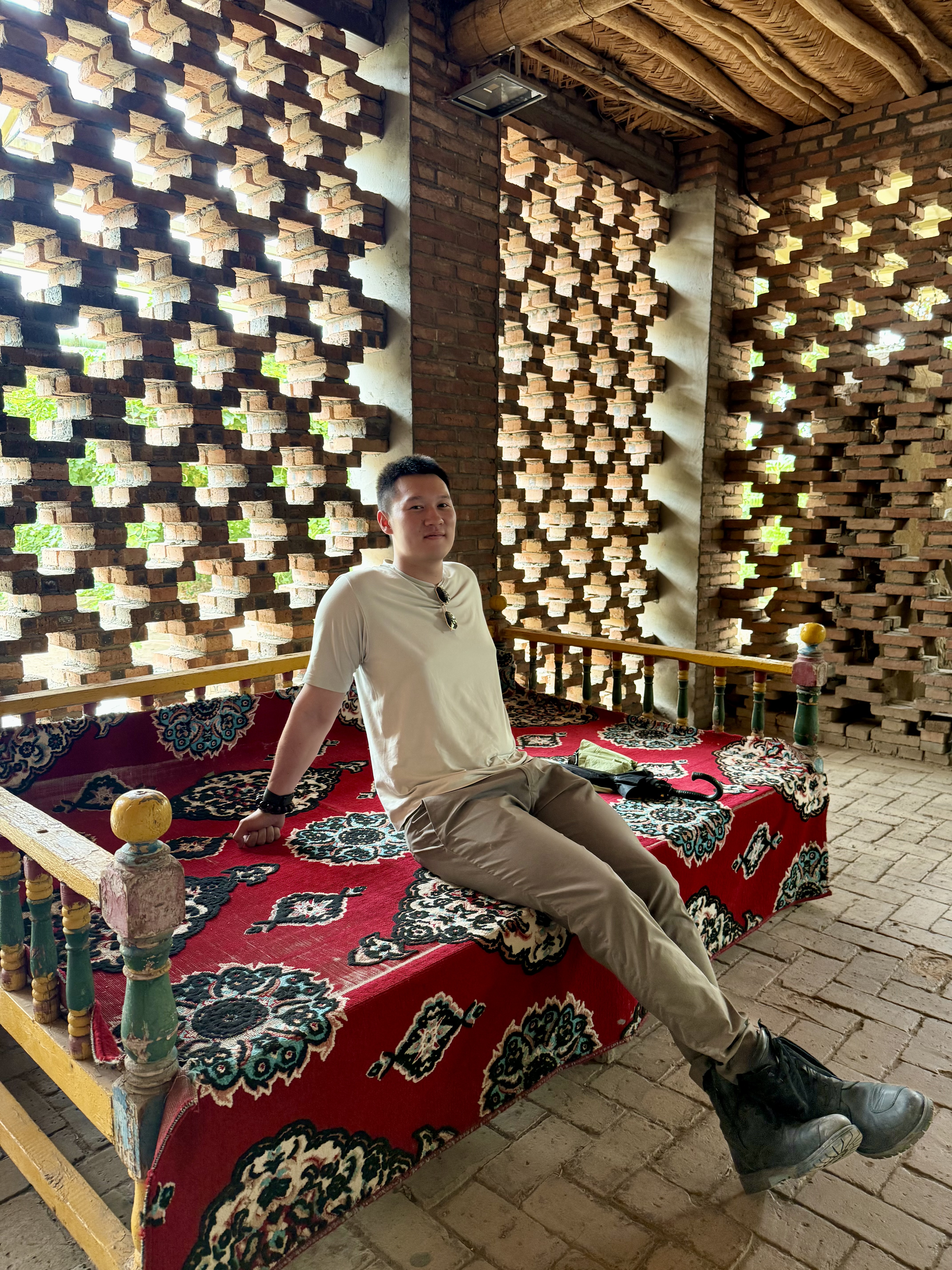 The Karez irrigation systems weren’t notable enough for pics, so here’s a photo of me at the museum
The Karez irrigation systems weren’t notable enough for pics, so here’s a photo of me at the museum
Then back to the hotel. Here was probably the most interesting part of the day: I had a chat with the hotel front desk who were Uyghurs, for some restaurant recommendations. What started as a short conversation took many turns, and soon enough I was asking them about Han <> Uyghur relations, and the practice of their faith. This was what really really surprised me.
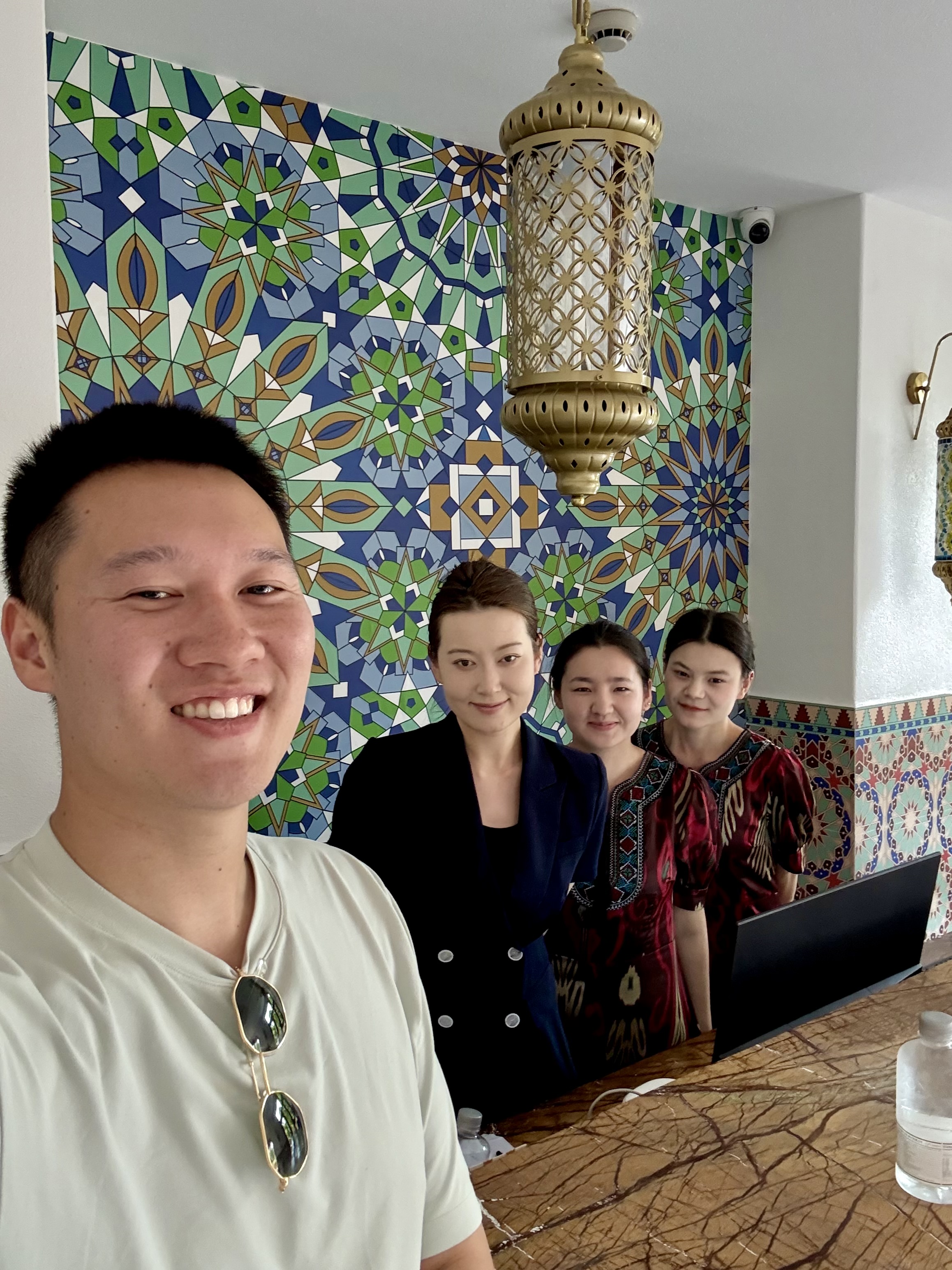 The hotel front desk staff and I
The hotel front desk staff and I
“So of your friends, what percentage of your friends drink?” “100% without a doubt” “Wait…isn’t drinking something considered Haram in the Qur’an? How come you guys still do it” “Err that’s a good point…I don’t really know.” “What percentage of your friends are Muslim?” “100%” Maybe it was a generational thing??? “Hmmm how about your parents generation? What percentages would you say drink there?” “Women of that generation tend to drink less culturally, but for men it would be 80%” “Hmmm okay. What about prayers. Do you guys do the Friday prayers, how many times do you pray per day?” “Friday prayers?” (She wasn’t sure what these were) “we don’t really pray”
With respect to Han <> Uyghur relations “oh we get along really well. Heaps of my friends are Han, lots of Han/Uyghur couples, and we don’t really see ourselves as too different besides being a different ethnic group”
I’m not sure if it’s just here in Turpan, and I guess I will see as I continue westward, but this is really different to what I had expected. One datapoint that supports this conversation however, is that I have not heard any calls to prayer thus far in Xinjiang (the only one I have heard was in Xining at Iftar in Qinghai province, but the muslim ethnic group there are the Hui people.)
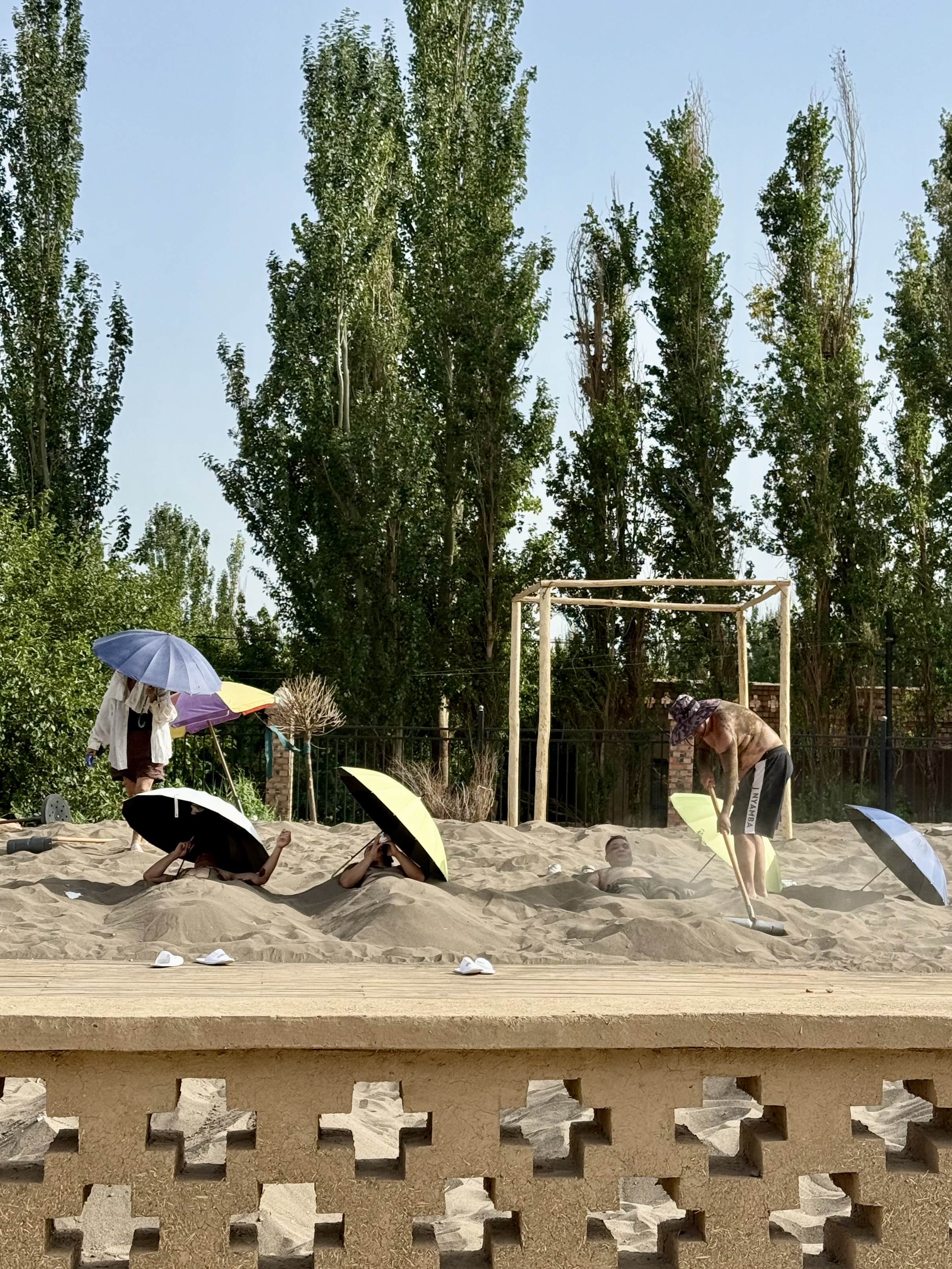 The hotel is known/offers a “sand burial” service for guests. The sand is very hot (air temps of 35 degrees, and a baking sun), so I could hear the yelps of the guy currently getting buried. Easy pass for me.
The hotel is known/offers a “sand burial” service for guests. The sand is very hot (air temps of 35 degrees, and a baking sun), so I could hear the yelps of the guy currently getting buried. Easy pass for me.
When wandering the city, I’ve noticed that Uyghur people seem to have an incredible range of appearances. Some appear more Central Asian, some look more European, and others like the half Asian/European mixes. I guess this is probably a result of the history of the region. For thousands of years, there have been wars, conquests, and presumably ethnic mixing between Han, Kyrgyz, Uyghur, Mongols, Xiongnu, Persians, etc.
Dinner was at an incredibly local restaurant, which only served two dishes: “Laziji” (Chili chicken), and “Dapanji” (Big plate chicken). These are the only two things you can order, and it comes in varying sizes, being “half chicken, one chicken” and so on and so forth. This was truly an epic feed.
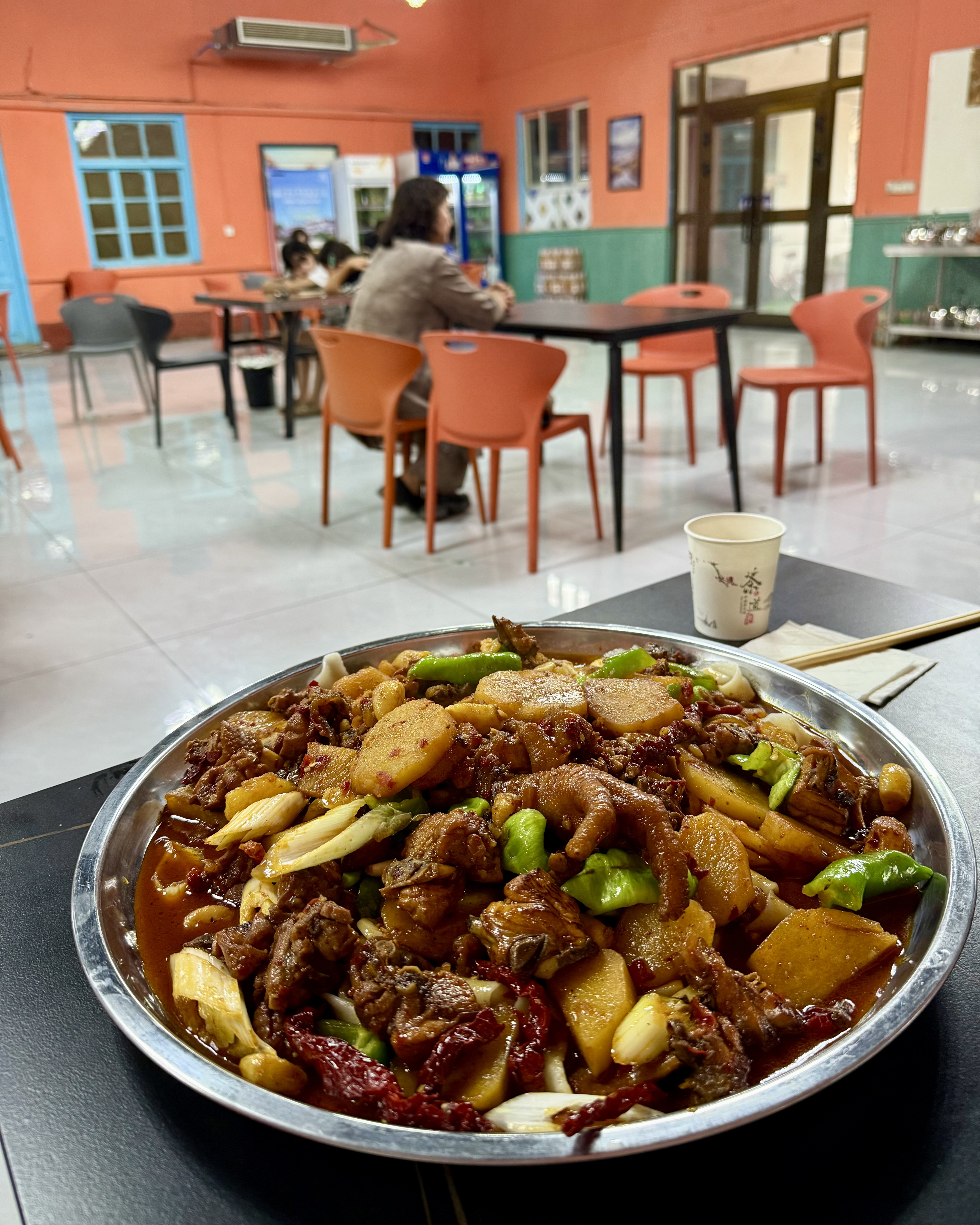 Da Peng Ji (大鹏鸡)
Da Peng Ji (大鹏鸡)
Tomorrow; Urumqi! I am looking forward to getting my tyres changed for a fresh set there. I was a bit worried about the tread on my rear tyres, which are almost entirely exhausted after almost 10000 KMs.
Some stats:
- 97 KMs travelled
- No fuel added
- 15g coffee consumed
- 3 unique interactions
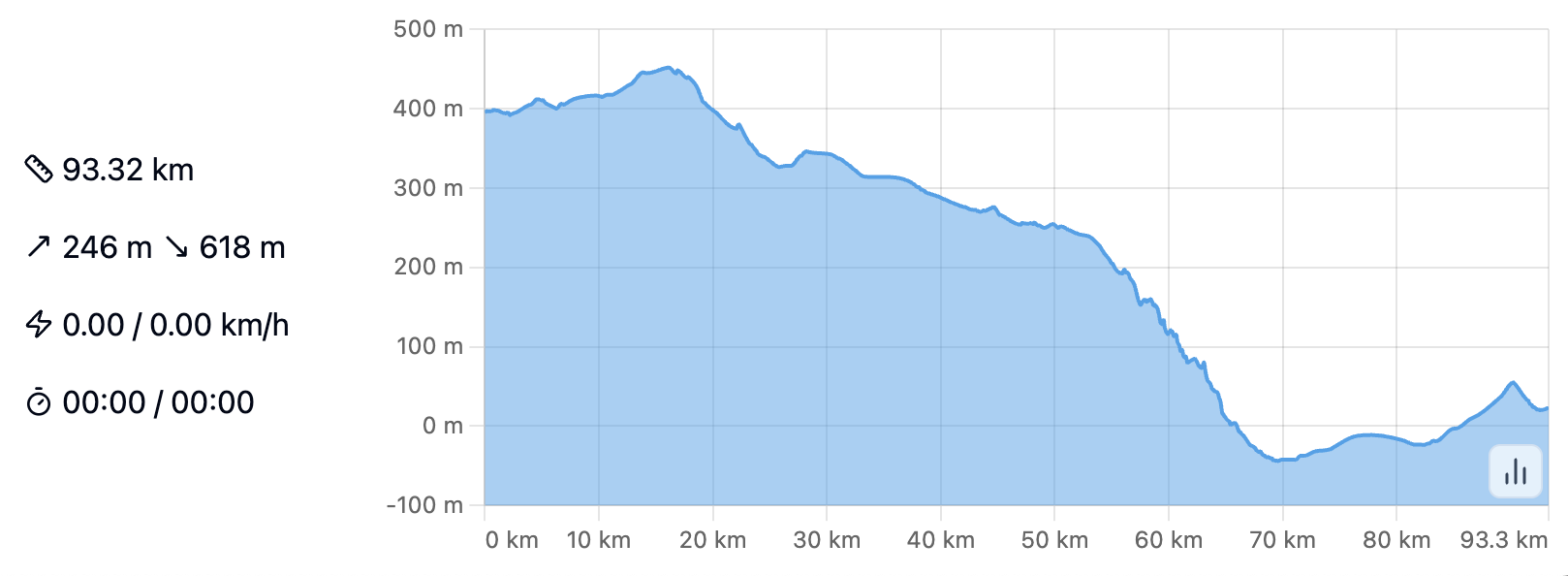 Altitude map of today’s ride
Altitude map of today’s ride
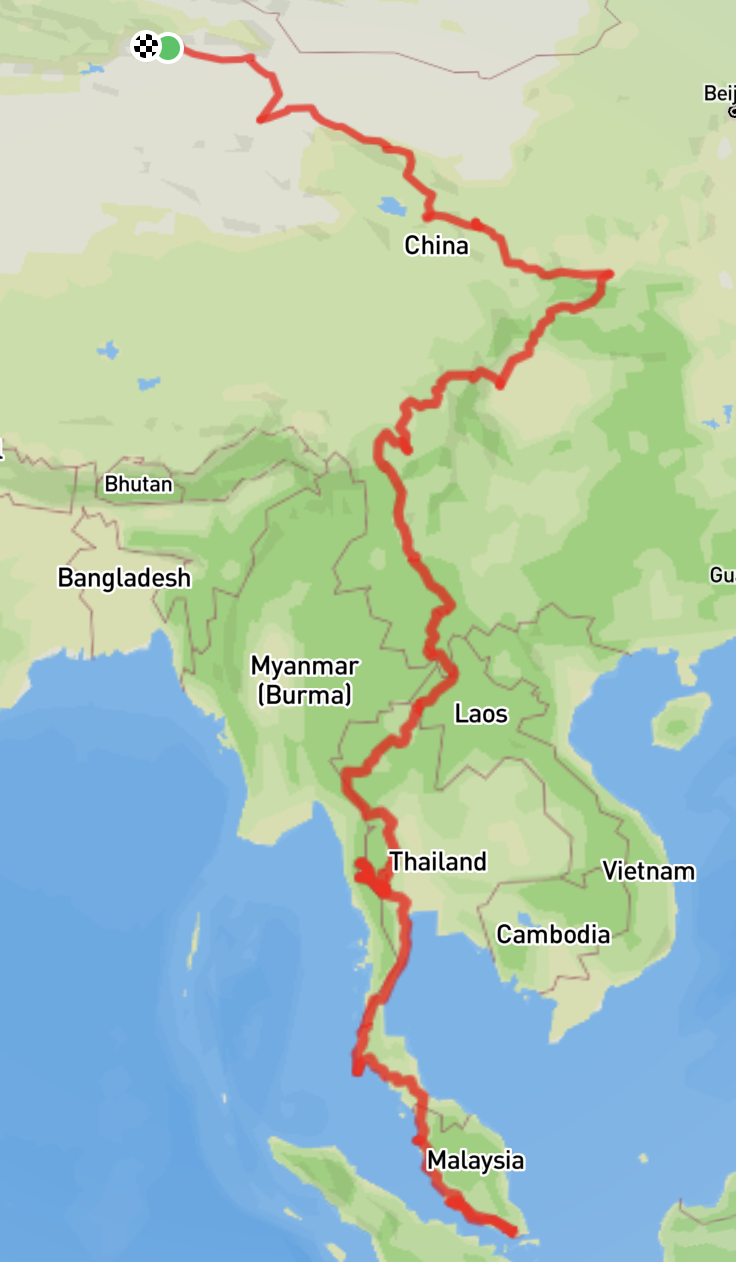 Route to date
Route to date